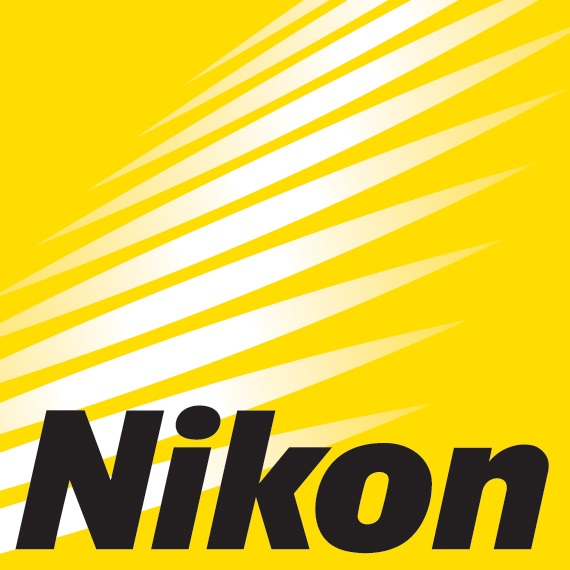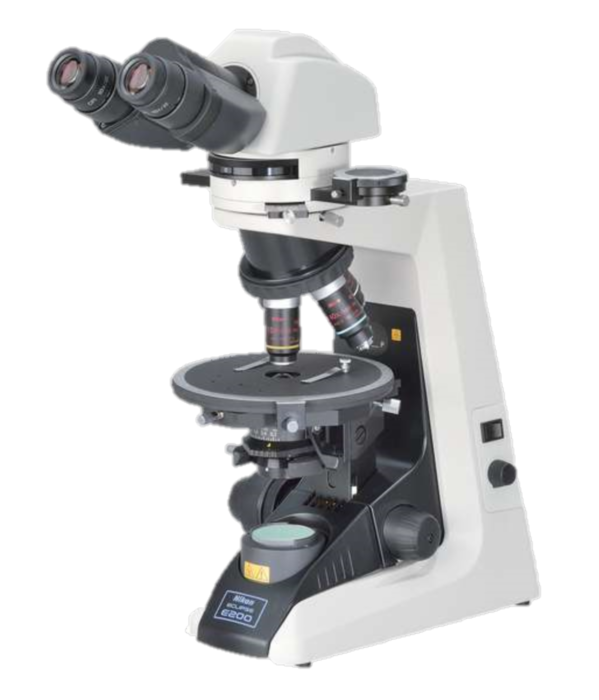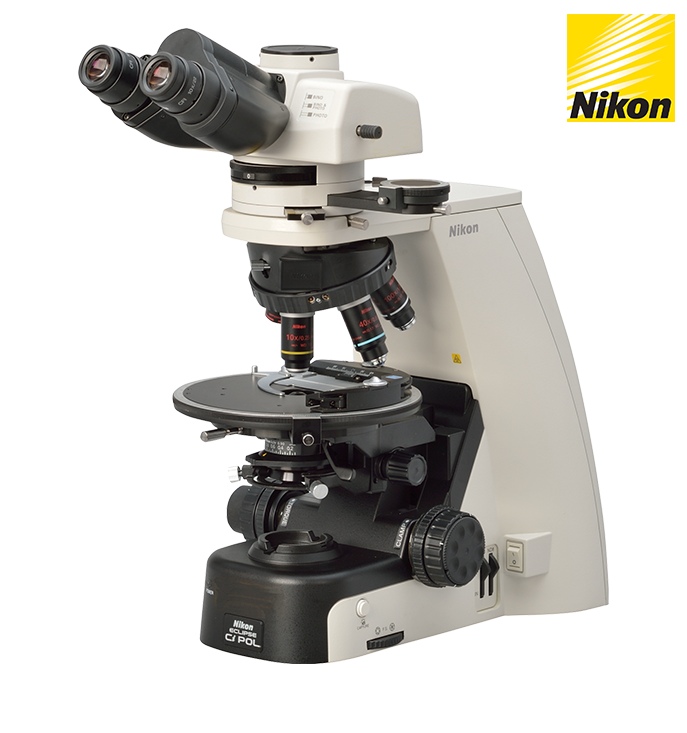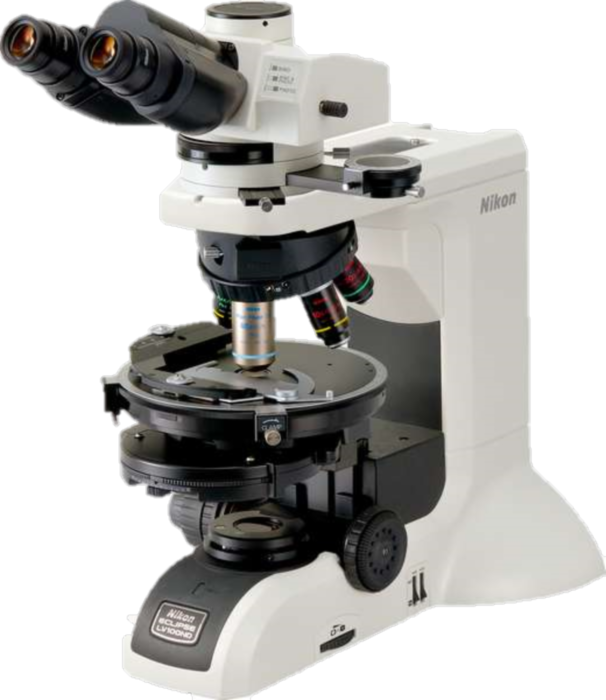ECLIPSE LV100N POL LED
다양한 이미징 애플리케이션 및 편광 기술을 위한 탁월한 광학 성능
LV100N POL LED 현미경 주요 특징
•밝고 오래가는 LED 광원 : 발열이 적은 밝고 수명이 긴 LED 광원을 탑재하여 열로 인한 초점 흔들림(focus drift)을 최소화합니다.
•뛰어난 안정성 : 니콘(Nikon)의 독자적인 스테이지 장착 디자인으로 뛰어난 안정성을 보장합니다.
•DIN 표준 보정기 슬롯 : 노즈피스(대물렌즈 회전 장치)에 DIN 표준 보정기(compensator) 슬롯이 장착되어 있습니다
•조절 가능한 대물렌즈 위치 : 노즈피스의 5개 대물렌즈 위치 모두에서 중심을 맞출 수 있습니다.
•CFI60 무한 광학 시스템: 높은 개구수(NA)와 더 긴 표준 작동 거리(working distance)를 제공하는 CFI60 무한 광학 시스템을 자랑합니다.
•안전한 샘플 교환 메커니즘: 클램프 방식의 상한 초점 조절 메커니즘을 통해 샘플과 광학 부품을 충돌 손상으로부터 보호하면서 쉽고 안전하게 샘플을 교환할 수 있습니다.
•견고한 현미경 본체: 안정적이고 수년간 믿을 수 있는 사용을 위해 견고하게 설계된 현미경 본체입니다.
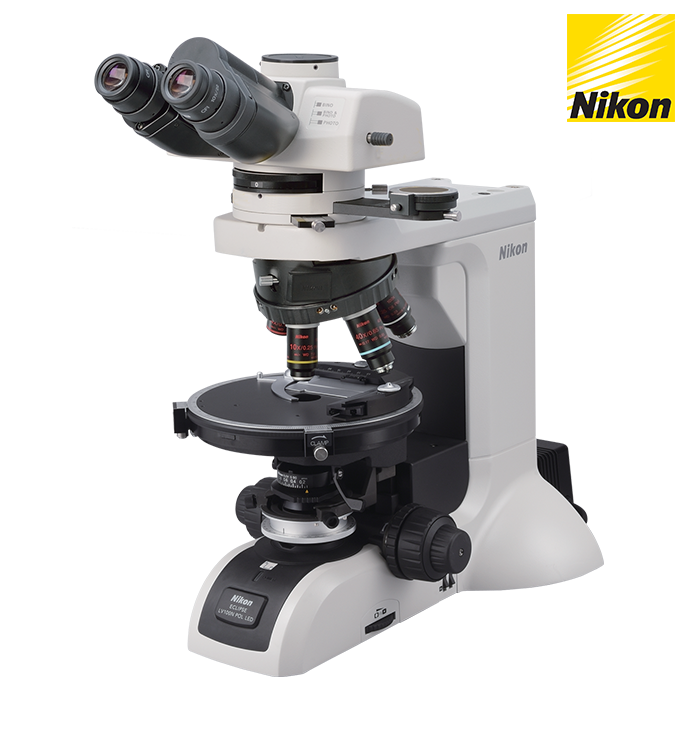
주요 특징들
투과 조명(Diascopic Illumination)을 통한 균일한 밝기
니콘(Nikon)의 독자적인 플라이아이 렌즈(fly-eye lens)가 투과 조명 광학계에 적용되어 시야 전체에 걸쳐 균일한 밝기를 보장합니다.
이는 디지털 이미징에 완벽한 조건입니다.
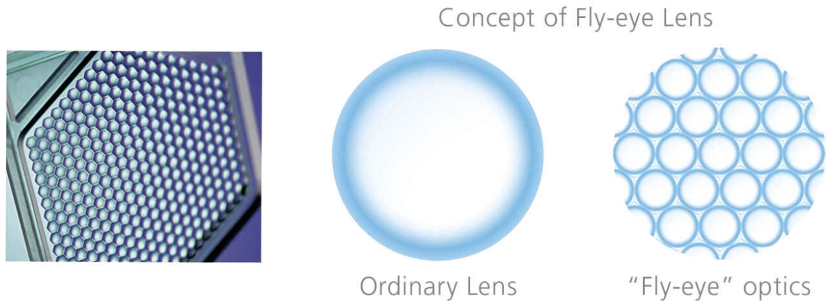
고정밀 회전 스테이지
스테이지는 넓고 사전에 조정되어 있으며, 45도 간격으로 클릭-스톱(click-stops) 기능이 있습니다.
부드러운 스테이지 움직임은 안정적이고 쉬운 회전을 가능하게 하여 높은 조작성과 고품질의 편광 이미지를 제공합니다.
또한, 스테이지는 광축 근처 바닥에서 지지되고 steel cross roller guides를 통합하고 있어 뛰어난 안정성과 내구성을 자랑합니다.
• 초점 이동 거리 확장 : 초점 이동 거리가 30mm로 늘어나 높은 샘플도 쉽게 관찰할 수 있습니다.
• 클램프 방식 상한 초점 조절 : 클램프 방식의 상한 초점 조절 메커니즘을 통해 쉽고 안전하게 샘플을 교환할 수 있습니다.
리버스형 5구 노즈피스
(Reversed centering quintuple nosepiece)
노즈피스(대물렌즈 회전 장치)는 DIN 표준 보정기(compensator) 슬롯을 갖추고 있어, 고급 정량 측정을 위한 다양한 보정기를 장착할 수 있습니다.
또한, 5개의 모든 대물렌즈를 각각 중심에 맞출 수 있습니다.
중간 튜브
(Intermediate Tube)
중간 튜브에는 베르트랑 렌즈(Bertrand lens)가 기본으로 내장되어 있어, 코노스코프(conoscopic) 및 정시야(orthoscopic) 이미지를 모두 관찰하고 캡처할 수 있습니다.
베르트랑 렌즈는 초점을 맞추고 중심을 조절할 수 있습니다. 또한, 고정밀 슬라이더 타입의 분석기(analyzer)는 360도 전체를 회전시킬 수 있습니다.
편광 관찰용 대물렌즈
• CFI 아크로마트 P 대물렌즈 시리즈 (투과 조명용)
니콘(Nikon)의 독자적인 CFI60 무한 광학 시스템은 긴 표준 작동 거리와 높은 개구수(NA)를 성공적으로 구현하여, 뛰어난 이미지 평탄성, 대비(contrast) 및 비용 성능을 제공합니다.
• CFI TU 플랜 플루오르 EPI P 대물렌즈 시리즈 (투과/반사 조명 겸용)
CFI TU 플랜 플루오르 EPI P 시리즈의 CFI60-2 대물렌즈는 배율에 관계없이 놀랍도록 선명하고 수차(aberration) 없는 이미지를 구현합니다.
• 니콘 CFI 무한 광학 시스템의 친환경성
니콘 CFI 무한 광학 시스템은 납이나 비소와 같은 유해 물질을 사용하지 않고 제조된 에코-글라스(eco-glass)를 사용합니다.
-
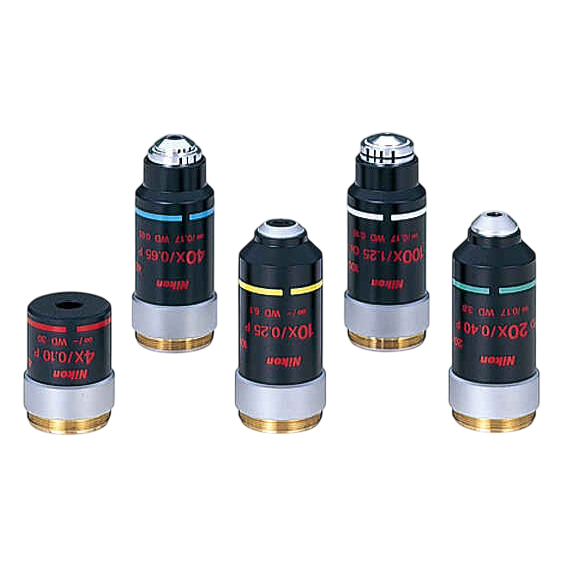
CFI P Achromat objective series (for diascopic illumination)
-
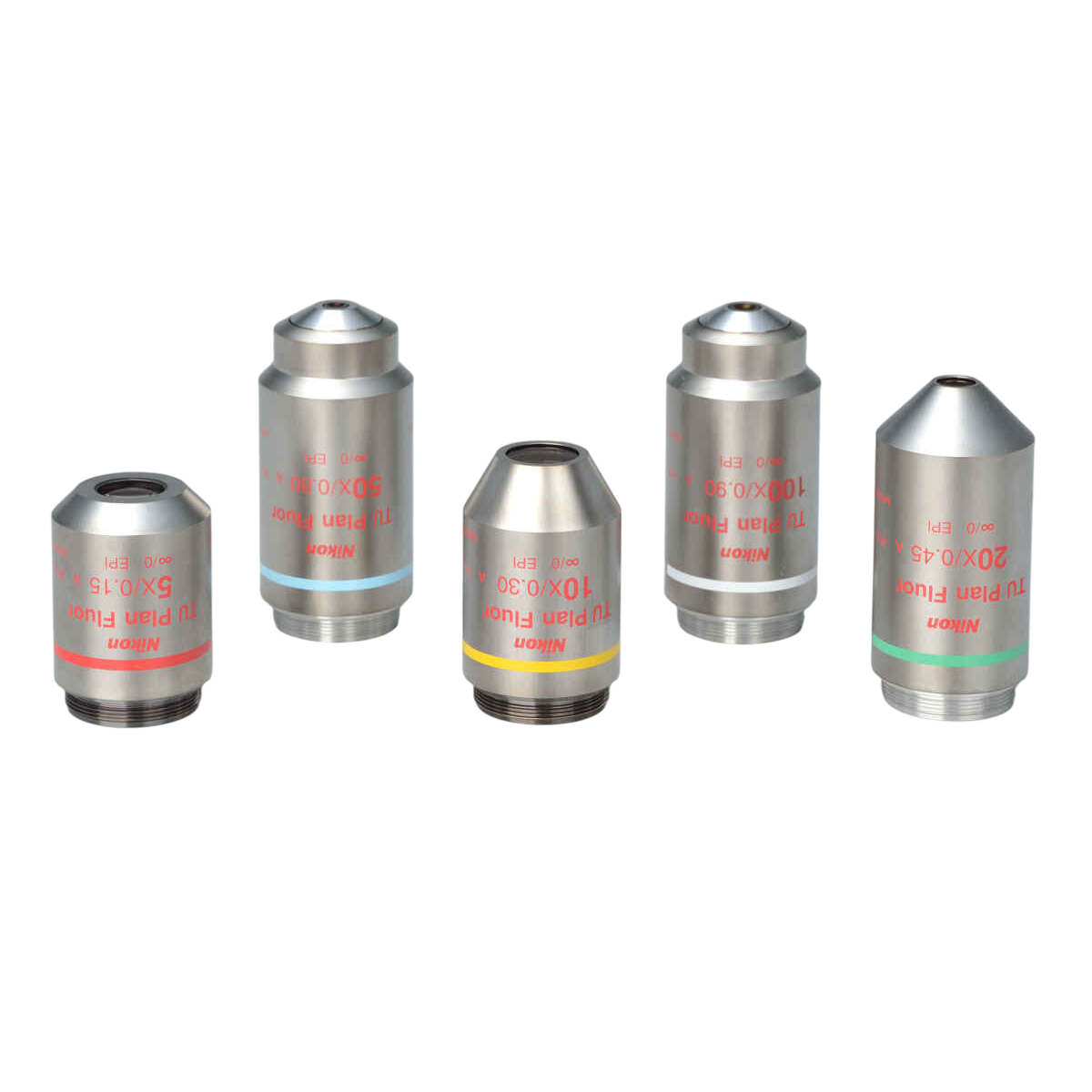
CFI TU Plan Fluor EPI P objective series (for episcopic illumination)
투과/반사 조명 방식
(Diascopic/Episcopic Illumination Type)
LV-UEPI-N 유니버설 에피-일루미네이터를 활용하여 투과 및 반사 편광 관찰 모두 가능합니다.
LV100N POL LED 현미경의 조명 기술은 간단한 동작으로 전환할 수 있습니다.
또한, 에피-일루미네이터는 밝고 수명이 긴 LED 광원을 사용하며, 노이즈-터미네이터 메커니즘(noise-terminator mechanism)을 탑재하여 높은 S/N비(signal-to-noise ratio)로 선명한 이미지를 제공합니다.
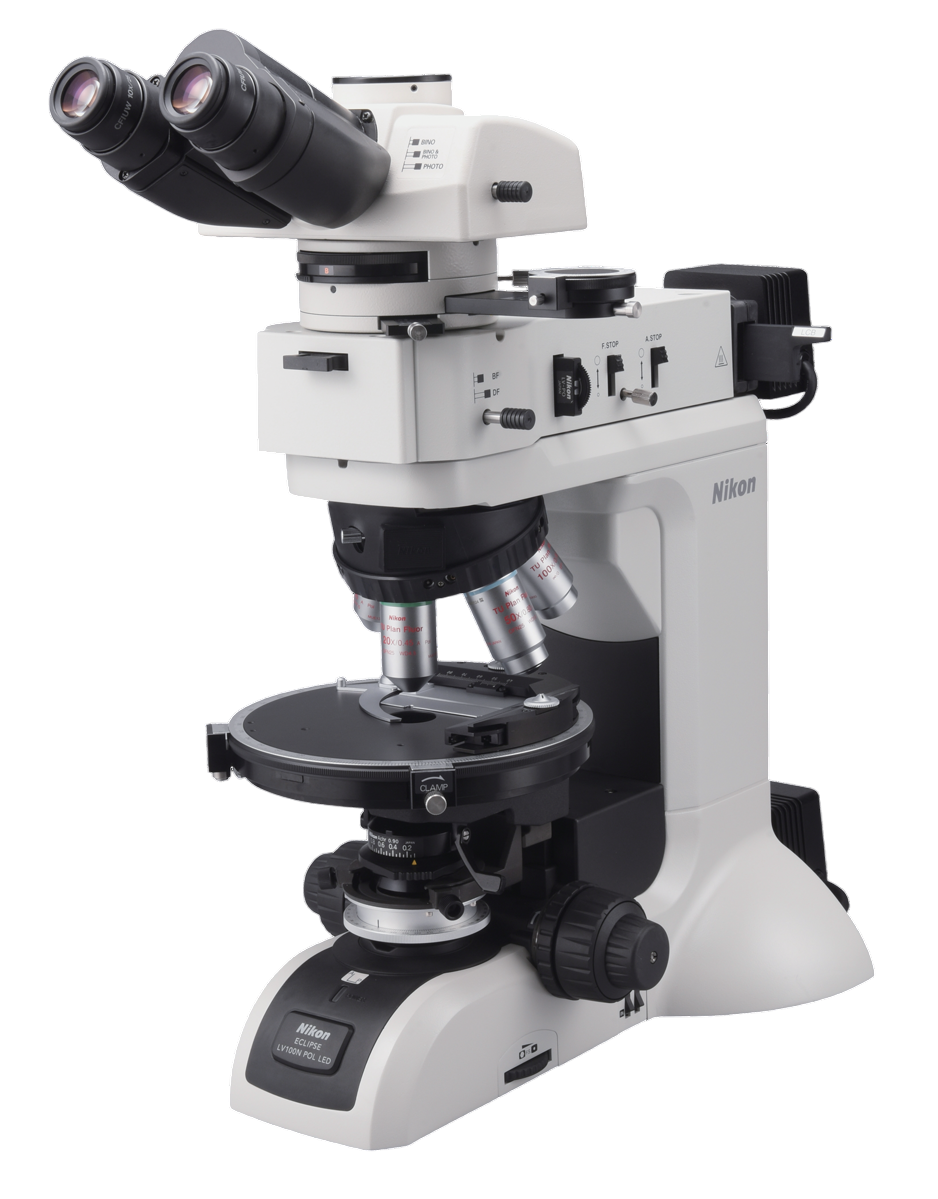
현미경용 디지털 카메라
DS-Fi3 및 Digital Sight 10 카메라는 PC에 직접 연결했을 때 NIS-Elements 소프트웨어를 통해 영상 획득, 처리, 측정, 분석, 데이터 관리 및 보고서 작성을 수행할 수 있습니다.
• DS-Fi3 현미경 카메라 (C-마운트)
5.9 메가픽셀 CMOS 센서를 탑재한 DS-Fi3는 최대 2880 x 2048 픽셀의 고해상도 이미지를 초당 15프레임(fps)으로 빠르게 획득할 수 있습니다.
뛰어난 색 재현력으로 생생한 편광 이미지를 구현하며, 약한 조명의 편광 샘플에서도 부드러운 라이브 이미지 움직임과 높은 감도 이미징을 제공합니다.
• Digital Sight 10 현미경 카메라 (F-마운트)
이 카메라는 최대 6000 x 3984 픽셀까지 컬러 및 흑백 이미지를 모두 캡처할 수 있는 고해상도 카메라입니다.
이를 통해 넓은 영역의 이미지를 한 번에 촬영할 수 있으며, 여러 조각의 이미지를 하나로 stitching하여 크고 단일한 결합 이미지를 만들 수 있습니다.
스펙


